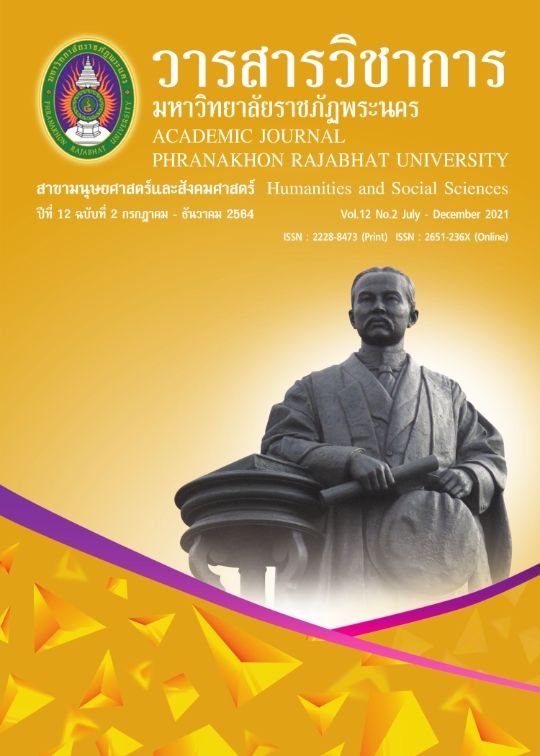THE INTEGRAL GUIDELINE FOR TAI ETHNIC SAFE MIGRATION FROM SHAN STATE TO THAILAND THROUGH CHIANG RAI PROVINCE BORDER
Keywords:
การย้ายถิ่น, ความปลอดภัยในการย้ายถิ่น, ชาติพันธุ์ไต, รัฐฉาน, ชายแดนประเทศไทยAbstract
Migration has long been a social phenomenon of global population for a thousand years involving several reasons such as change of residence, employment opportunities, natural change, political conflicts, shortage of resources, financial pressure, safe and secure shelter suitable for oneself, family, and group. Like the case of the Tai ethnic group in Shan State, Burma, who has still migrated across the border into Thailand until now, leading to social conflicts in many aspects and in all levels from the origin country, transition area, bordering and destination area in Chiang Rai. The problems have intensified and became more complicated. Therefore, the strategies, prevention and problem-solving policies should be systematically studied, analyzed, and implemented. The purposes of this research were to study the phenomena including its form and the effect of migration from Shan State into Thailand border in Chiang Rai province and to implement the integral guidelines into the pilot project for Tai people’s safe migration. The research Instruments used questionnaire for data collection from 50 Tai immigrants by accidental sampling population study. The research also used structured interview methodology to collect the 30 Tai purposive sampling structured interview migrants and to implement the pilot project for safe Shan migration focusing on Shan Youth safety training to end risky migration. The research findings revealed that most of the Tai were stateless people without official documents. Consequently, legal border crossing was impossible for them. Most the Tai people, therefore, escaped from the checkpoint by walking through the shortcut of uphill or rivers. Their illegal migration led to confront with most dangerous events when being arrested, seriously punished, or victimized by the troops or the officers at the checkpoints. Not only facing to their safety problems, but it would also affect the border community at the transition area like in Mae Sai district. When they wanted to temporally settle, more numbers of the immigrants would increase because their children or more family members from homeland followed them. Those children had no official documents. They were non nationality status and become trouble stateless children or under privileged which made them unable to access to any official social welfare. Therefore, the result of research based on these main findings leading to the network of 19 organizations designed the pilot integral plan of actions to prevent the at risk for Tai immigration from 19 local partners in original Shan state. The integral guidelines would be planed based on local situation based on the international standard to support the project for prevention migration from the Shan state to be safe when crossing into Thailand border in Chiang Rai province.
References
Assawarangseekul A.(2019). Problems of Ethnic Groups in Thailand: Cultural Identity Changes. National Academic Conference Rangsit University for the year 2019. April 26, 2019.p.947-957.
Boonlert A.(2009). Discourse of “Alien” and Constructing “Otherness” of
the Displaced Shan. Journal of Social Sciences, Faculty of Social Sciences, Chiang Mai University 21 (2), 103-41.
Bunrueang A.(2008). Migration For Education and Social Mobility : A Case
Study of Keng Tung Monks Studying in Religion Universities of Chiang Mai Province. Master of Arts (Regional Studies). Chiang Mai: Chiang Mai University
Charernwongsak K.(2003). Integral Thinking. Pimlak Krungtep:Success Medea.
Chatrakhom S. (1980). International Economical Labor (second printing)
Everett S. Lee. (1966). “A Theory of Migrations”, Demography, Vol. 3, No. 1, p. 49.
Gusztav Names. (2005) Integrated Rural Development the Concept and Its Operation. Budapest: Economics Hungarian Academy of Sciences. kf
International Organization for Migration (2013). Model change study project Migration of workers from Burma and its impact on Thailand.IOM Development Fund (IOM). International Organization for Migration. Bangkok office, Thailand.
Panyoy S. (2010). Case study of The Effects from Foreign Migrants Labor Sampran District Nakornpathom Province. Master Degree Decertation of Business Management, Public Management Branche, Commerce Since College, Burapa University.
Ramingwong P.(2015). “Living In-between”: The Distinctive Position of Shan Migrants in Thailand. interdisciplinary research journal. Vol. 4, No. 4, p.1-6.
Sai Sin A.(2009). escaping the crocodile of Burmese female workers A future Without light. Retrieved March 15, 2021 http://midnightuniv.tumrai.com/midnighttext/0009999808.html.Accessed January 15, 2015.
Downloads
Published
How to Cite
Issue
Section
License
"บทความวิชาการในวารสารฉบับนี้ ถือเป็นความรับผิดชอบของผู้เขียนเท่านั้น"
สงวนลิขสิทธิ์ตามพระราชบัญญัติลิขสิทธิ์




